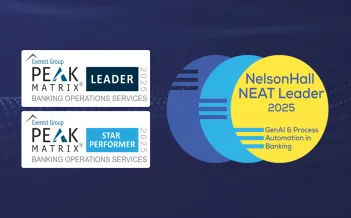Publication: bba

With the UK launch of Apple Pay, the explosion of contactless payments across Europe and more mobile banking partnerships being cemented all the time, the future looks bright for a certain kind of banking. That banking is digital and increasingly mobile.
The recent British Bankers’ Association (BBA) report World of Change highlighted how 22.9m banking apps have been downloaded so far (a rise of 8.2m in just one year). At the same time, £2.9 billion a week is transferred using these banking apps which have 10.5m log-ins each day. Banks also send 1.3m text alerts to their customers each week. This contrasts with 9.6m daily logins to internet banking services in the whole month of March this year, via laptop, tablet or desktop. At the same time there has been a 43% decline in telephone instructions by customers to their bank between 2008 and 2013 and a 6% decline in branch transactions in 2014.
While the digital switch and the recent changes to how banks operate are plain to see from those figures, there are still obstacles to overcome from a customer perspective. A survey conducted by YouGov for Firstsource Solutions in March showed the biggest reason deterring people making contactless payments with their smartphones was concern over security of the transactions (81%).
Security fears play into a general lingering concern UK customers have about banking technology, compounded by recurring IT outages, which can leave customers unable to access their accounts. The banks’ inability to say exactly when the issue will be resolved will not play well with today’s digital customer who is accustomed to seamless service. This is thanks to their regular dealings with feted global tech brands like Amazon, Apple and Netflix. No surprises those are among the top 5 best-perceived brands in America.
Successful brands plough enormous resources into staying ahead of the curve with technology. They spend a lot of time getting to know their customers’ habits and preferences. They move swiftly to answer customers’ questions and exceed their expectations in methods of resolution and compensation when things go wrong.
By contrast, banks are still playing catch-up on all these fronts. Although now spending £3 billion a year upgrading their IT systems after years of constraint brought about by the financial crisis, some of the infrastructure was predicated by a branch-based world of banking with overnight payment processing. Banks need to be leaping ahead if they are to make the most of the opportunities being brought about by ever-accelerating technological progress.
Yet a key consideration when keeping customers happy is not to put all your eggs in the digital basket. Human contact is still important for many and the right balance of investment in bricks and mortar is just as vital as online, mobile and contactless solutions. There are good signs that banks recognise this with, for instance, £400m being spent by RBS and NatWest on branch refurbishments this year.
Getting the balance right is vital to avoid customers feeling excluded or even patronised by self-serve options. One newspaper has just launched a campaign – Bring Back Real Customer Service – to highlight the frustration customers feel in banks, supermarkets and train stations when forced to deal with self-service machines rather than a real person. Even digital natives can feel banks come up short, as was the case when Apple Pay launched in the UK recently and some customers found themselves unable to use it.
Santander UK chief operating officer Juan Olaizola recently highlighted the need to balance the investment between front and back ends. While many tend to focus on the apps and how customers use those, it is only the back-end services that provide frictionless customer experience as seen with the likes of Amazon. His view was that banks still have a long way to go to provide that level of customer-centric service and that the growth in smartphones was dictating a response speed that banks did not control and were unaccustomed to.
There is no denying that now electronic payments have overtaken cash for the first time and mobile has become the UK’s number one way to bank, that the landscape has changed dramatically and permanently. This change will only accelerate and the need to keep pace with customer expectations will increase with it. With 5G due to arrive in 2020 and the quantum leap in transaction speeds and other technological capabilities it will bring, banks need to be closing the customer service gap. By that time Visa Europe predicts UK mobile payments will have tripled and 60% of Britons will be using their smartphones to pay at least once a week.
With the rise of seven-day switching, challenger banks and diverse payment methods, increased competition means all banks have to look at ways of standing out from the crowd. They have to do this with innovative customer service that delivers top quality personalised banking. Spanish bank BBVA has demonstrated the potential of this approach for banks – mining its vast store of customer data to offer goods and services that better meet their needs. This includes building new apps through “open innovation” with employees, customers, shareholders and other bank stakeholders all contributing to design better content. One of its US offshoots has developed online tools to help consumers save towards specific targets, working out how much of their budget is “safe to spend” after factoring in upcoming bills.
After a bruising decade when banks’ reputations have taken a real battering, there remain many challenges in this tightly regulated, swiftly evolving digital world.
The first challenge is for banks to keep pace with technology changes while playing catch-up with their digital offering.
Secondly, there is a need to stay ahead of increasing numbers of bank competitors while managing to meet expanding customer expectations.
Thirdly, banks must offer the right mix of automation and human-solutions, including a bricks and mortar high street presence, so as not to alienate customers.
Finally, working with the right expert partners who can provide the data analytics and customer journey knowledge to ensure banks can provide truly personalised services and be more helpful than ever before.
If they can pull off this complex trick, banks may once gain become a trusted ally and generate the kind of love and loyalty felt towards the superbrands like Apple.
Tim Franklin is an advisory board member on banking issues at Firstsource Solutions, a leading business process management company.










